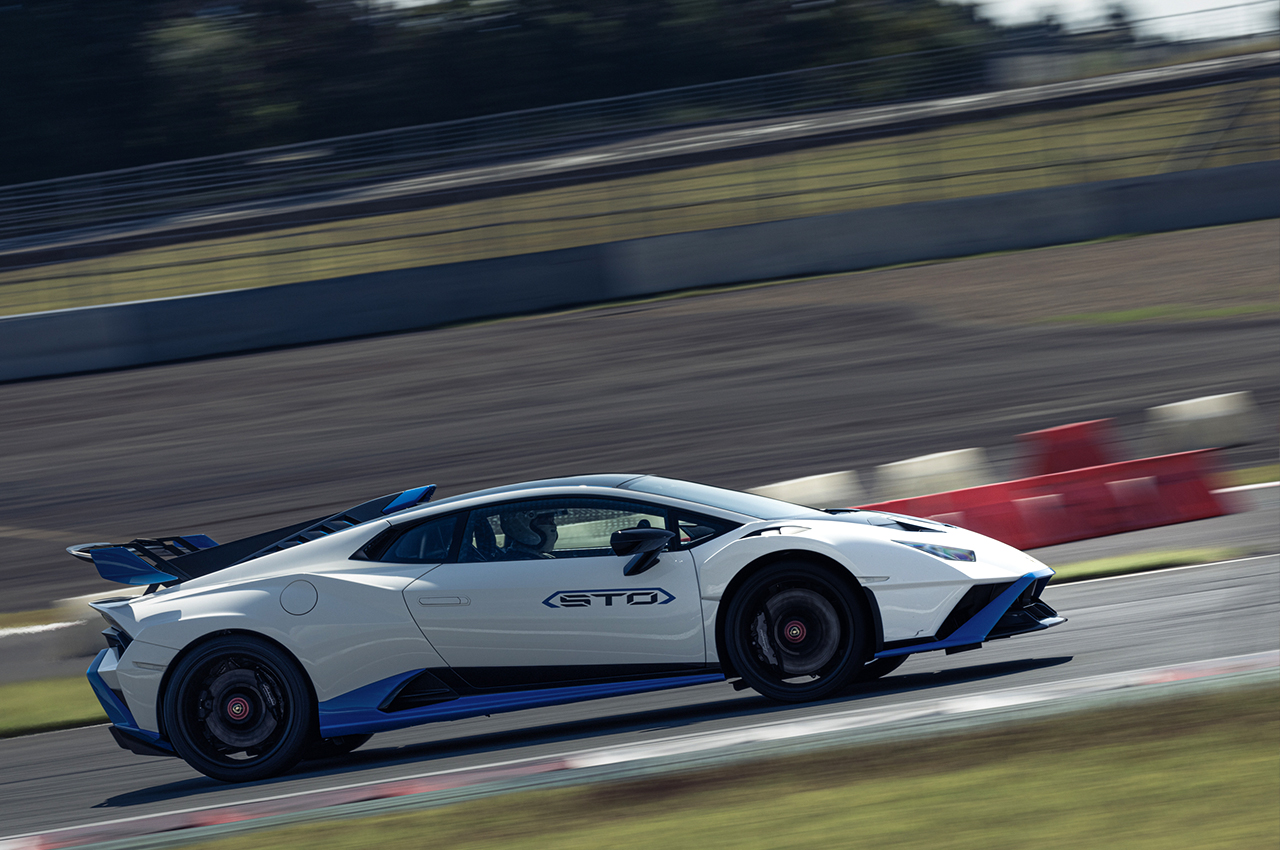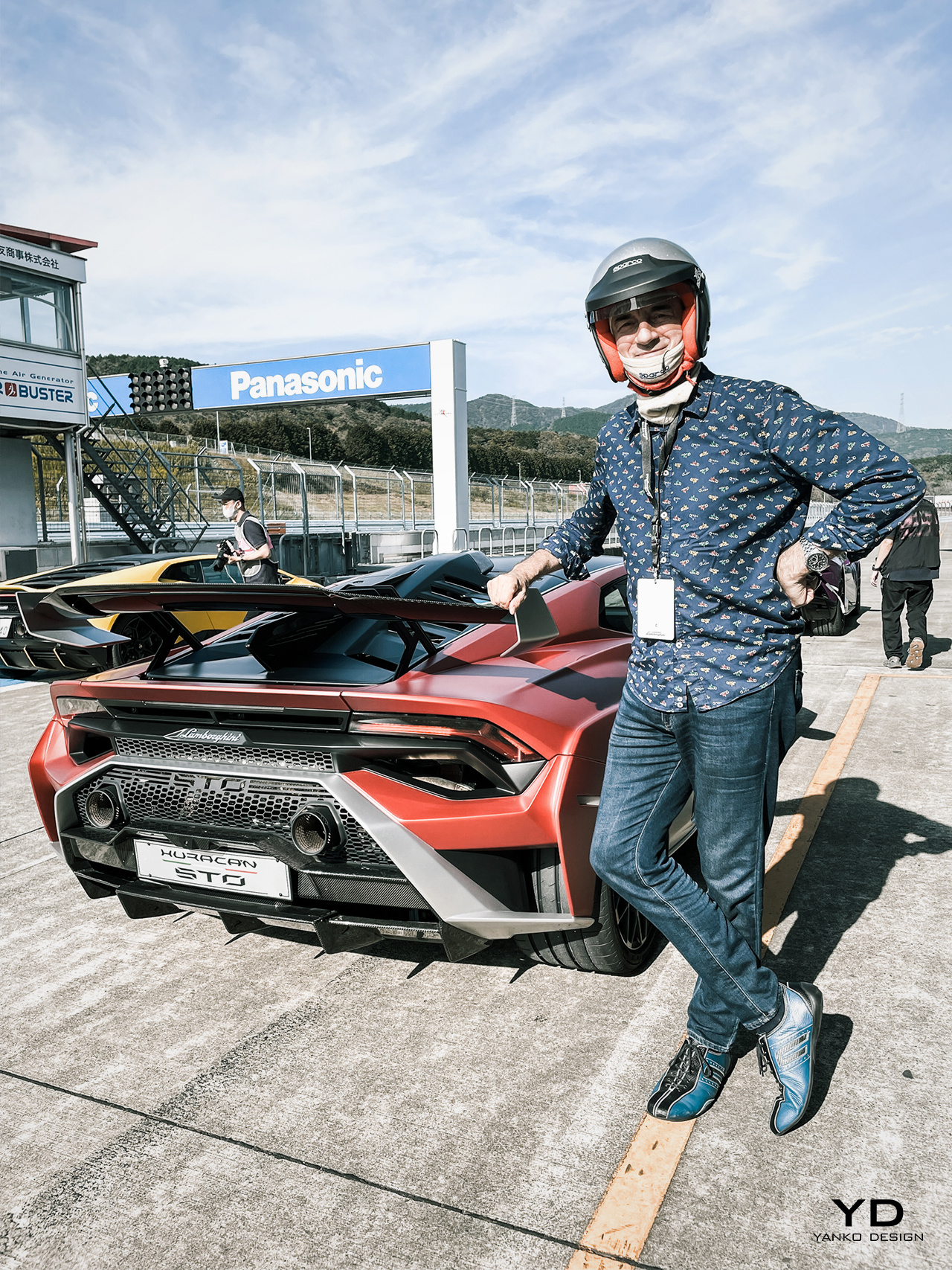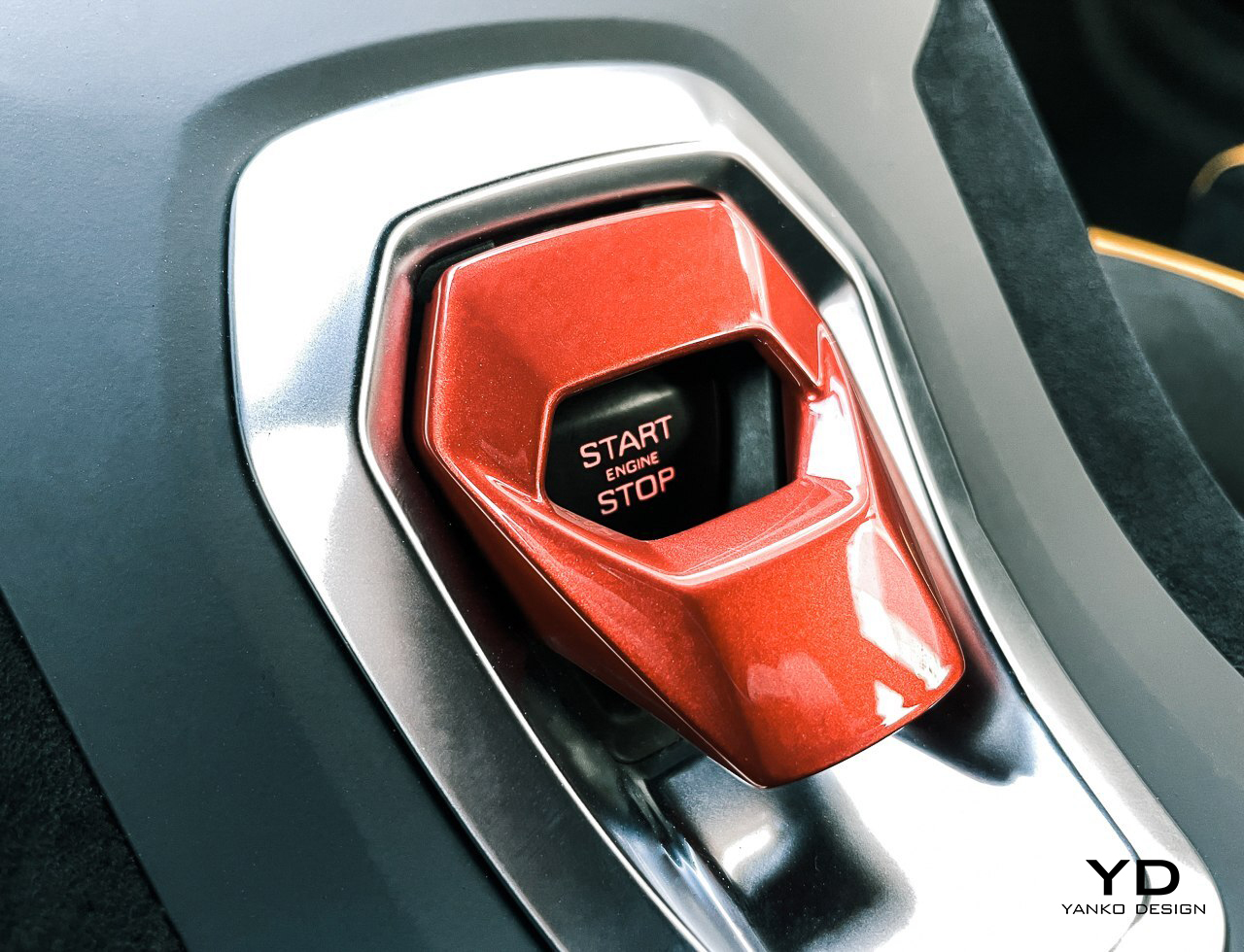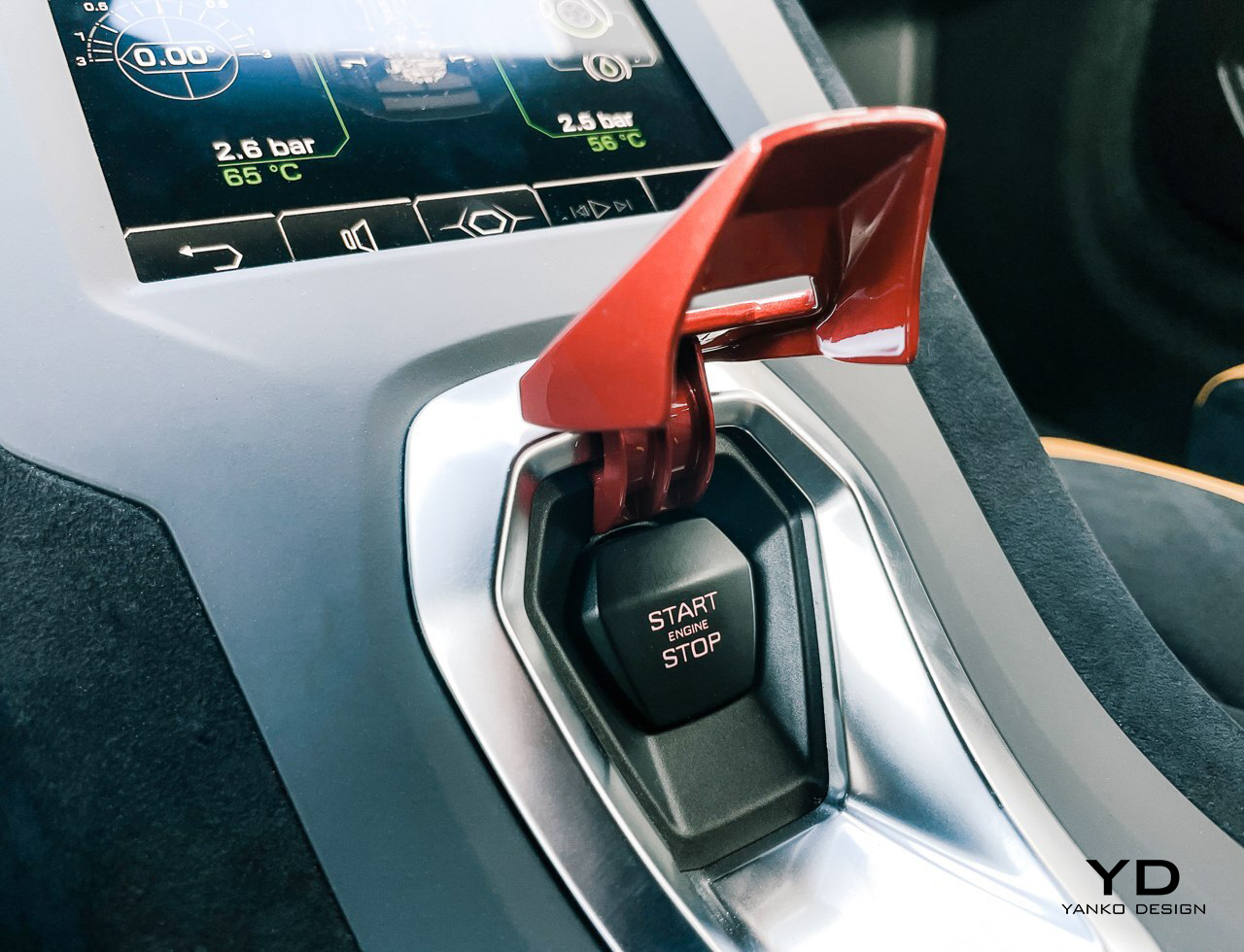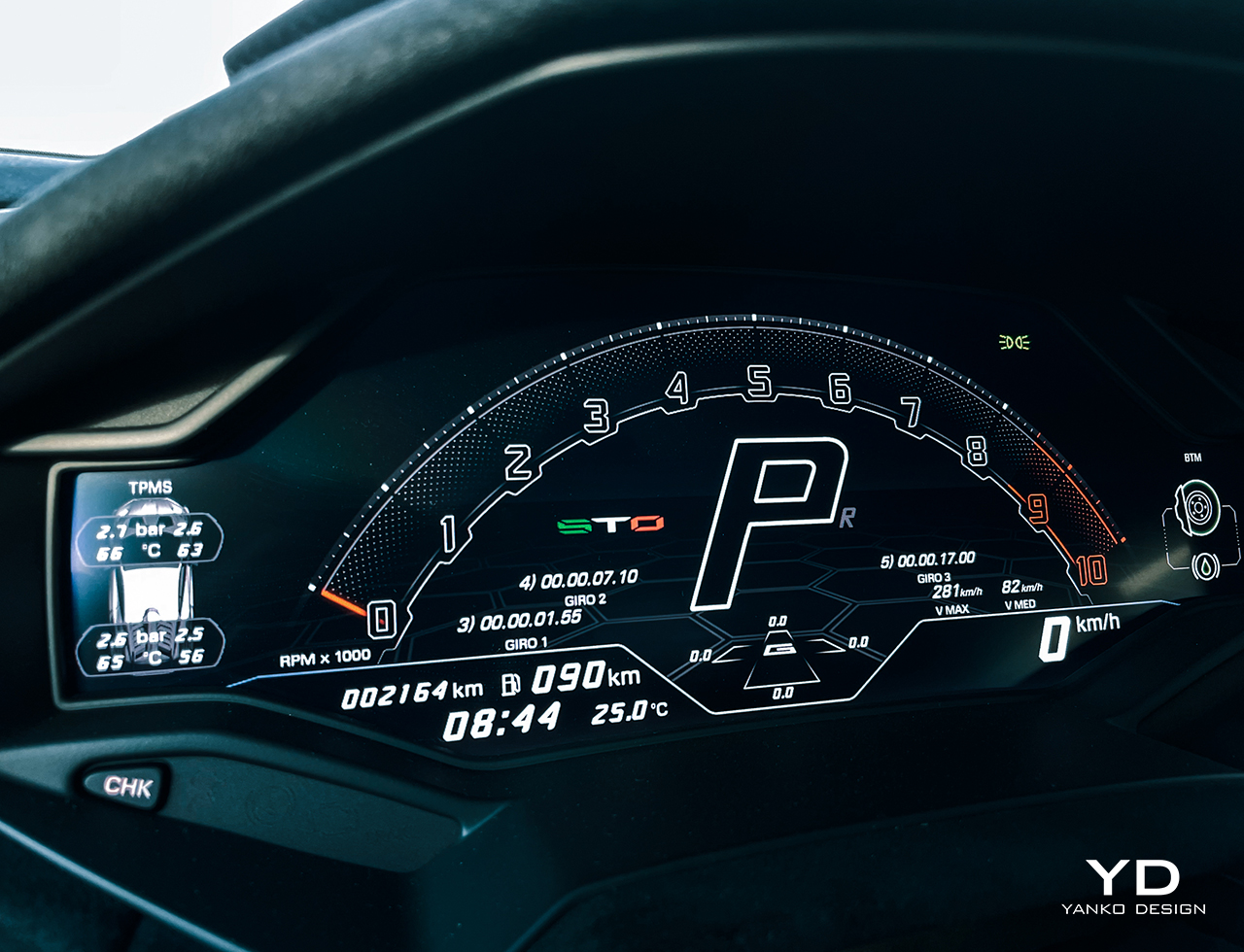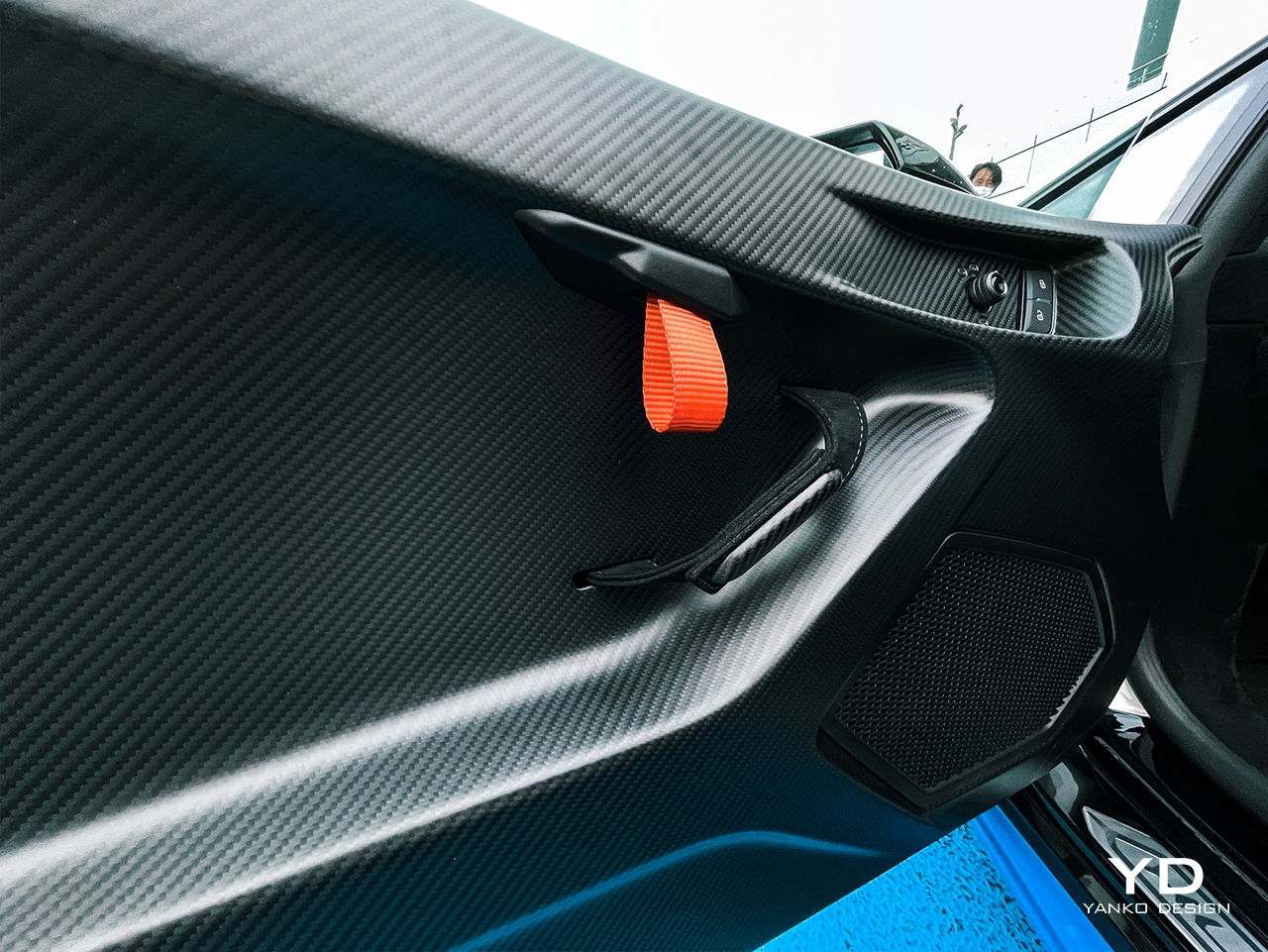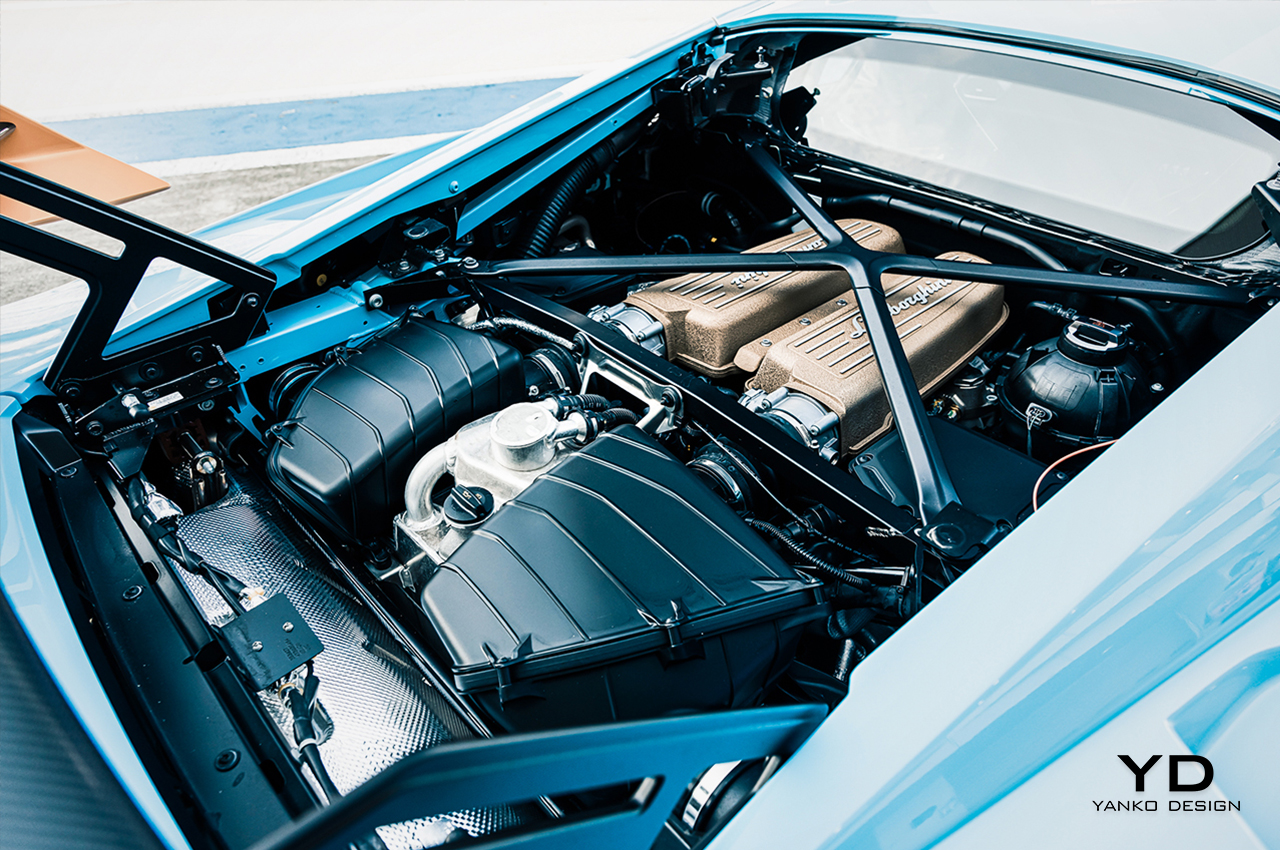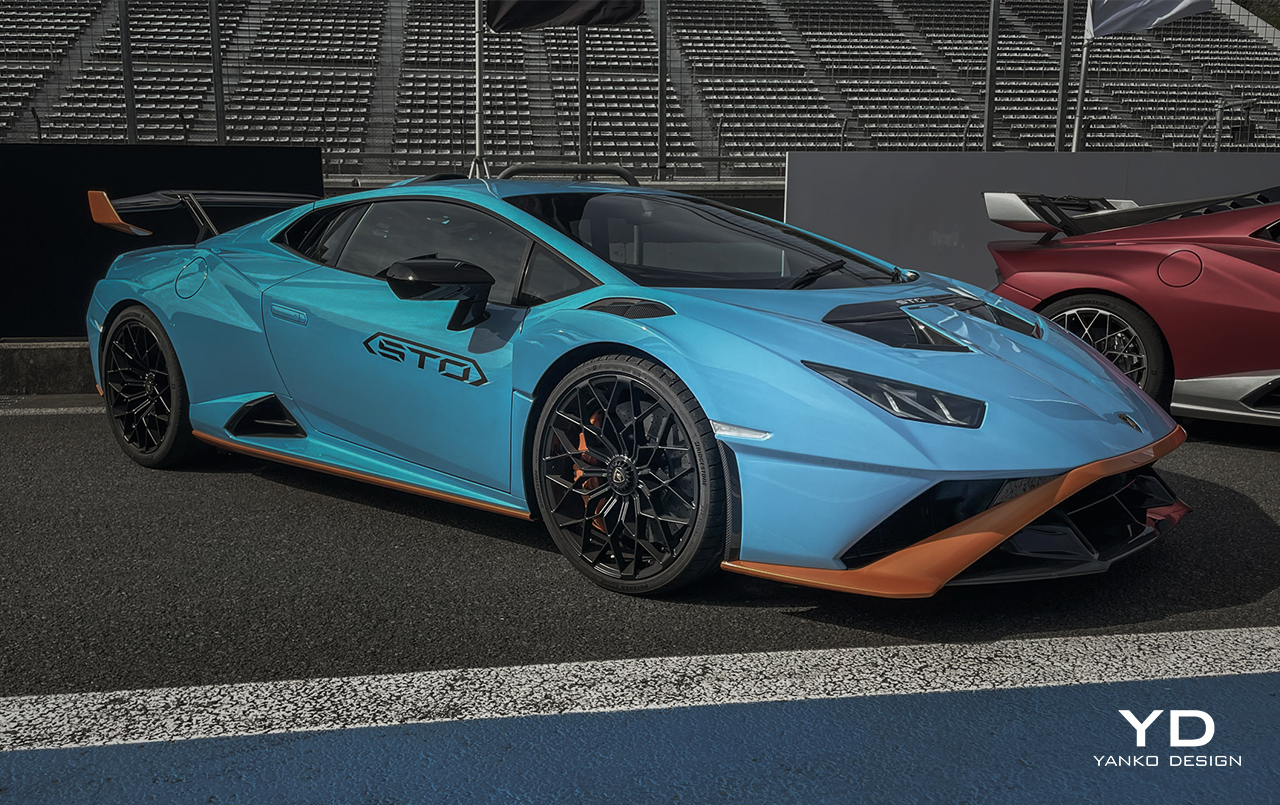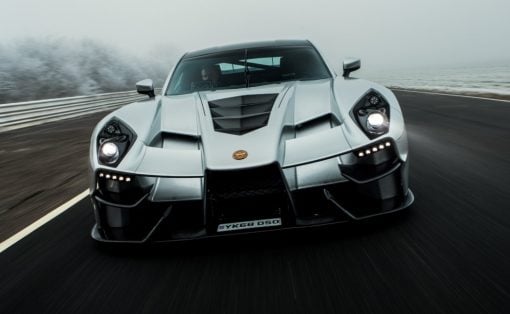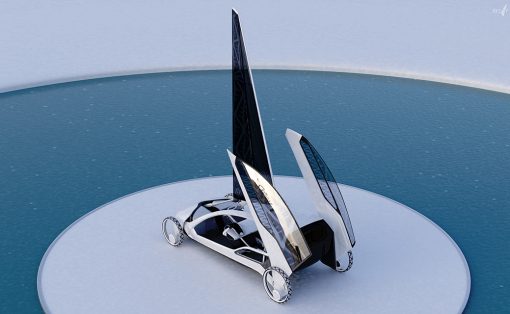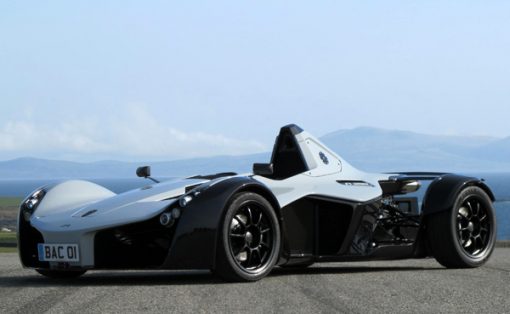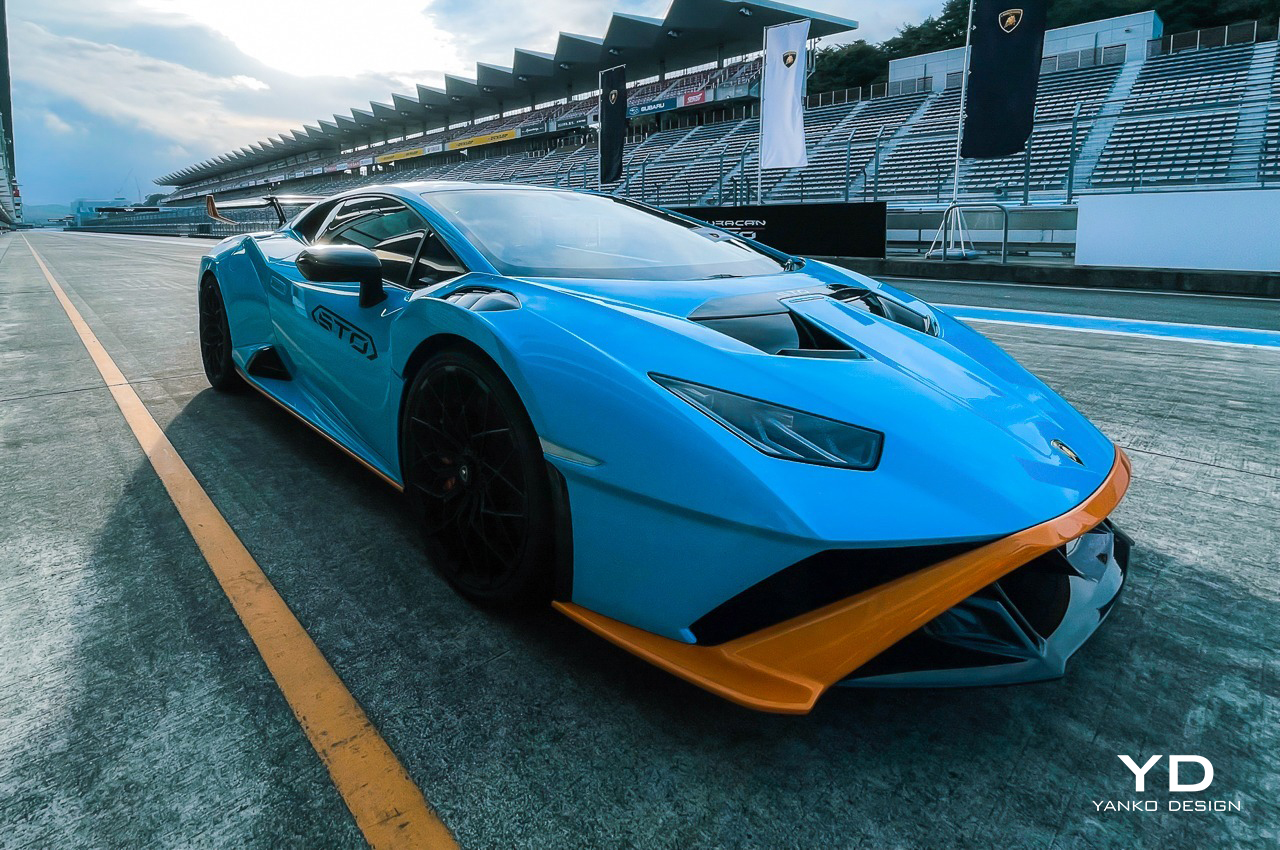
When subtlety was being handed out, the Lamborghini Huracán STO was at the back of the line napping. Actually no, that’s not true. It had snuck away from the queue and darted to a nearby race track to get an injection of steroids and a full race car cosmetic makeover.
Because that’s what this car is all about. Loud to look at and loud at 8500 revs. It’s basically a street-legal race car. With its ultra-low sleek profile, huge air intakes, massive rear wing, and screaming V10 engine, this model is the most eye-opening Huracán and best handling yet. Descended from the DNA of the Lamborghini Super Trofeo one-make series—hence the ‘STO’ name that stands for Super Trofeo Omologata (Italian for Homologation)—this hypercar is more tailored to track use than city driving. Much more.
Thanks to Lamborghini Japan, I was able to test the STO’s raw performance in the most thrilling way there is—flying at 180 mph down the main straight at Fuji Speedway, an ex-F1 track 90 minutes south of Tokyo with one of the longest straightaways in motorsport, at nearly one mile in length. The only thought I had as the car cleared 170 mph was, “Crikey, I hope the brakes work.” They did. Magnificently.
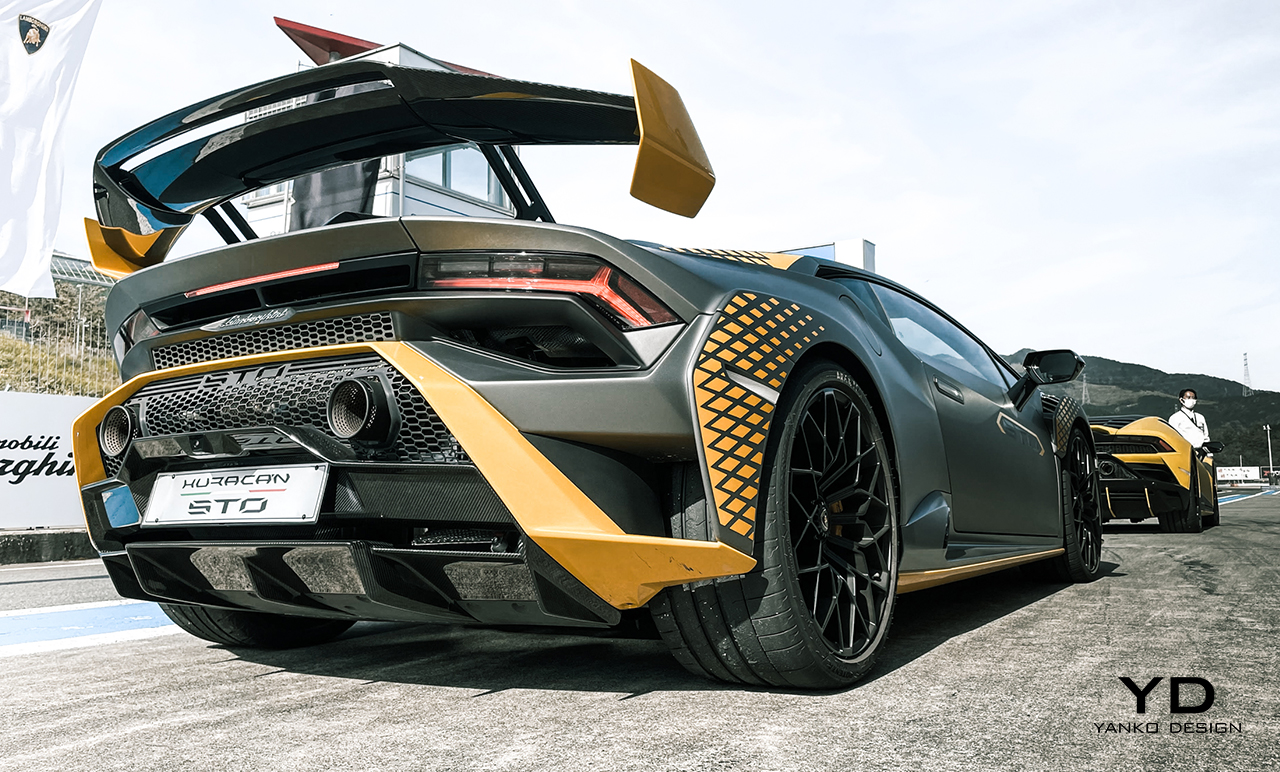
A Hardcore Lamborghini Turned Up To 11
Launched in 2014, the original Huracán was already seen as a shocking, edgy, beautiful, inspired piece of kinetic design, something that composer Igor Stravinsky might have conceived if he was into car styling. The half a dozen Huracán STO models that awaited me in the pit lane took that reality to a whole new level. These highly-strung works of automotive art—kind of like Stravinsky’s stylistic diversity meets Pablo Picasso’s cubism meets the color explosion of Andy Warhol’s ‘Marilyn Monroe’ screenprint—were nothing short of jaw-dropping, purveyors of an assault on all five senses that would linger for days after the drive.
But before I could get behind the wheel of these epic machines, I had time to take in their race car-inspired exterior, multiple color schemes, and extreme aerodynamics. There are six color combinations that highlight the sleek lines and edges of the STO. While you can get the car in matt grey and yellow, white and blue, dark red and grey, lime green and orange, my favorite is the version with the light blue and orange Gulf Racing-inspired colors. Lamborghini designers must have thought long and hard about these six colors schemes because they really do highlight the extreme body aeroparts of the STO, making the cars look more like ready-made race cars than street legal supercars.
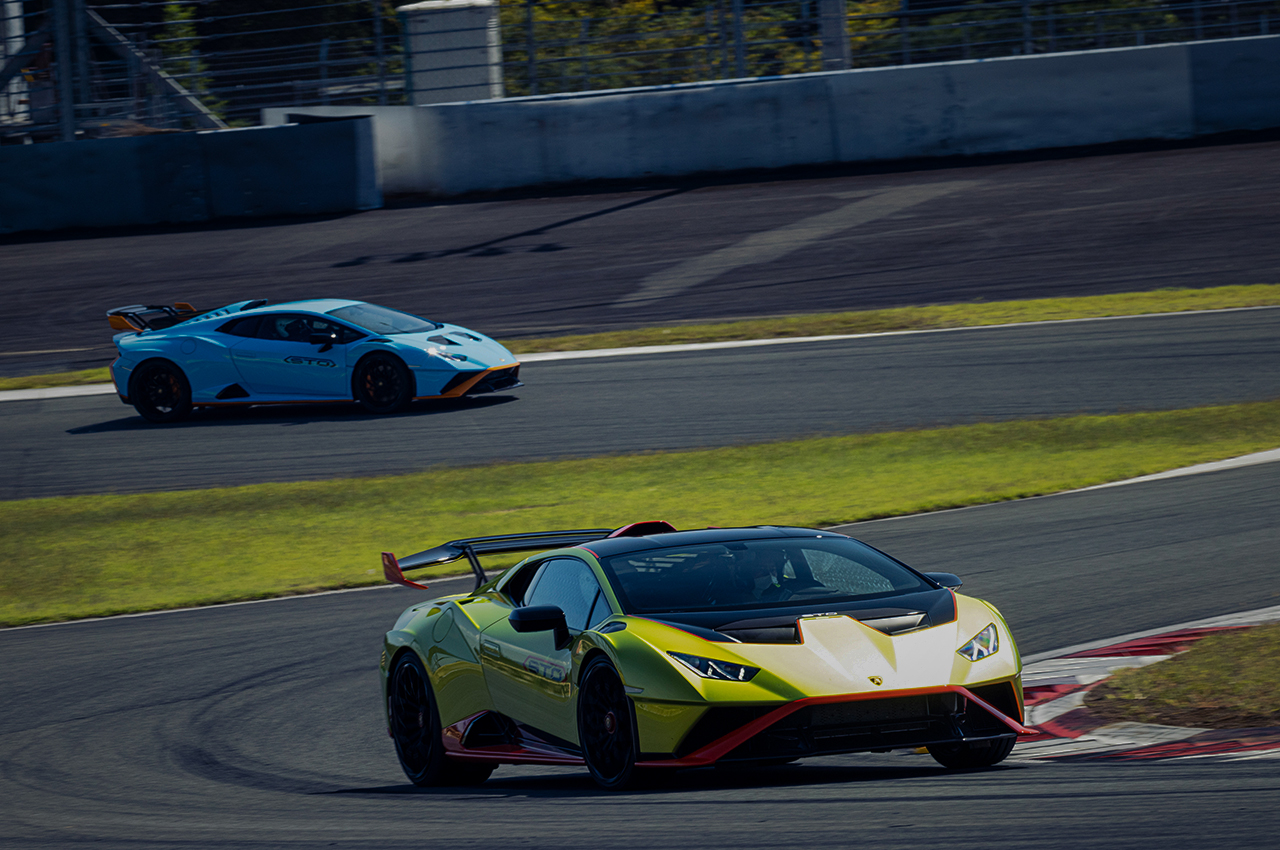
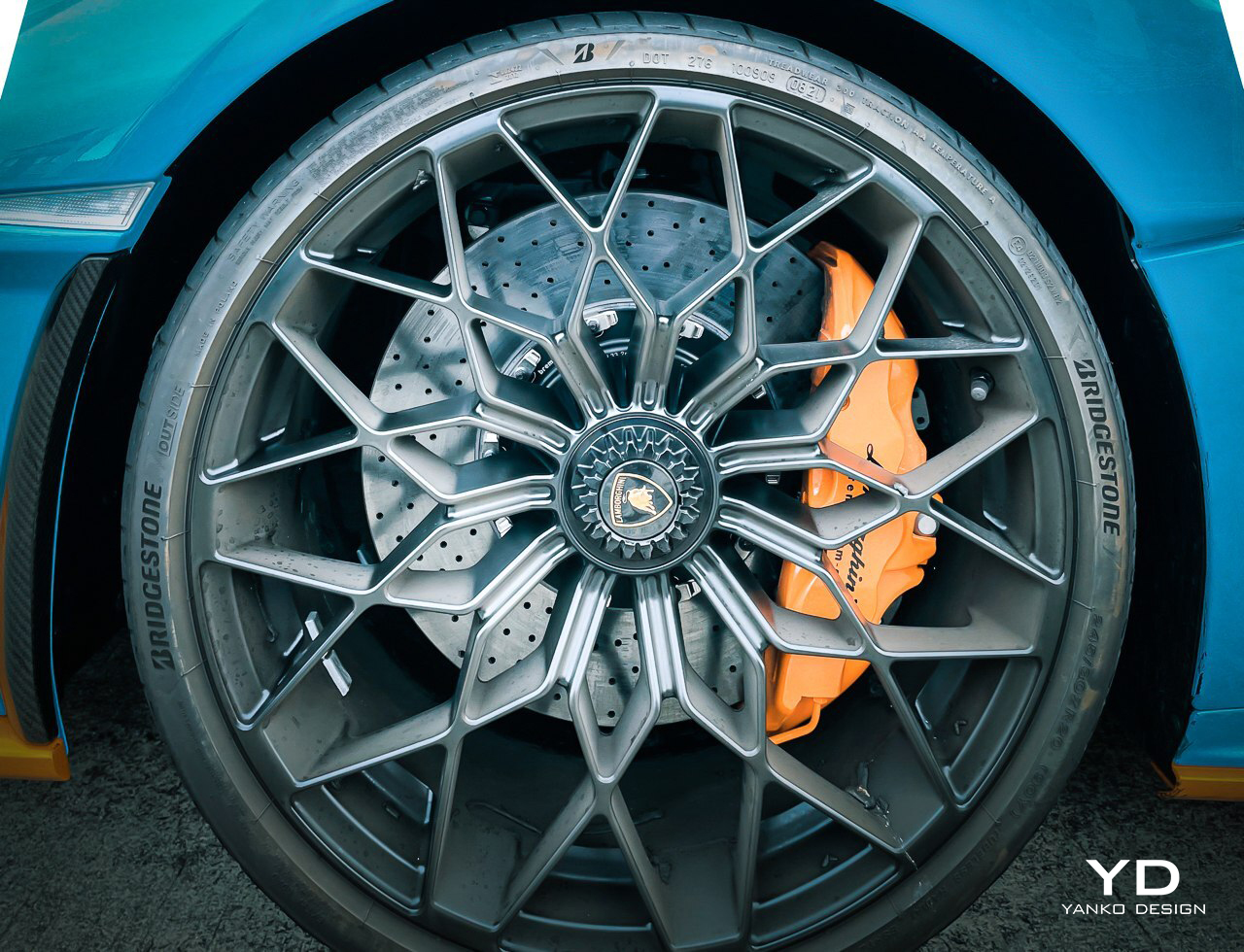
The STO is a rear-wheel only Huracán that is some 95-lbs lighter than the Huracán Performante, an already significantly tweaked Huracán upgrade that came out several years ago. This STO however, has gone straight for the jugular vein of its racing pedigree brother and borrowed design and technology generously from the Huracán Super Trofeo Evo model from the one-make race series. Okay, it might get the same non-hybrid, non-turbocharged 631-hp 5.2-liter V10 engine as the Performante, but in every other department, the volume has been turned up to 11.
Being biased towards track performance, the STO had to be as light but as strong and rigid at high speed as possible. To minimize weight but maximize rigidity, the STO employs magnesium wheels, extra weight-saving carbon fiber body panels, a thinner windscreen, and a one-piece hood bumper and rear diffuser. One of the impressive innovations in this special version is that one-piece front clamshell hood or ‘cofango’ in Lamborghini speak. This catchy term is a hybrid between the Italian words for ‘cofano’ (hood) and ‘parafango’ (fender). Featuring large built-in apertures, the combined hood and front bumper minimize weight and enhance aerodynamics.
Surprisingly, the switch from Performante’s four-wheel-drive setup to the STO’s rear-wheel drive has only saved 44 lbs. Some 18 lbs have been added however through its active rear-steering system, taking the car’s kerb weight to 2,952 lbs.
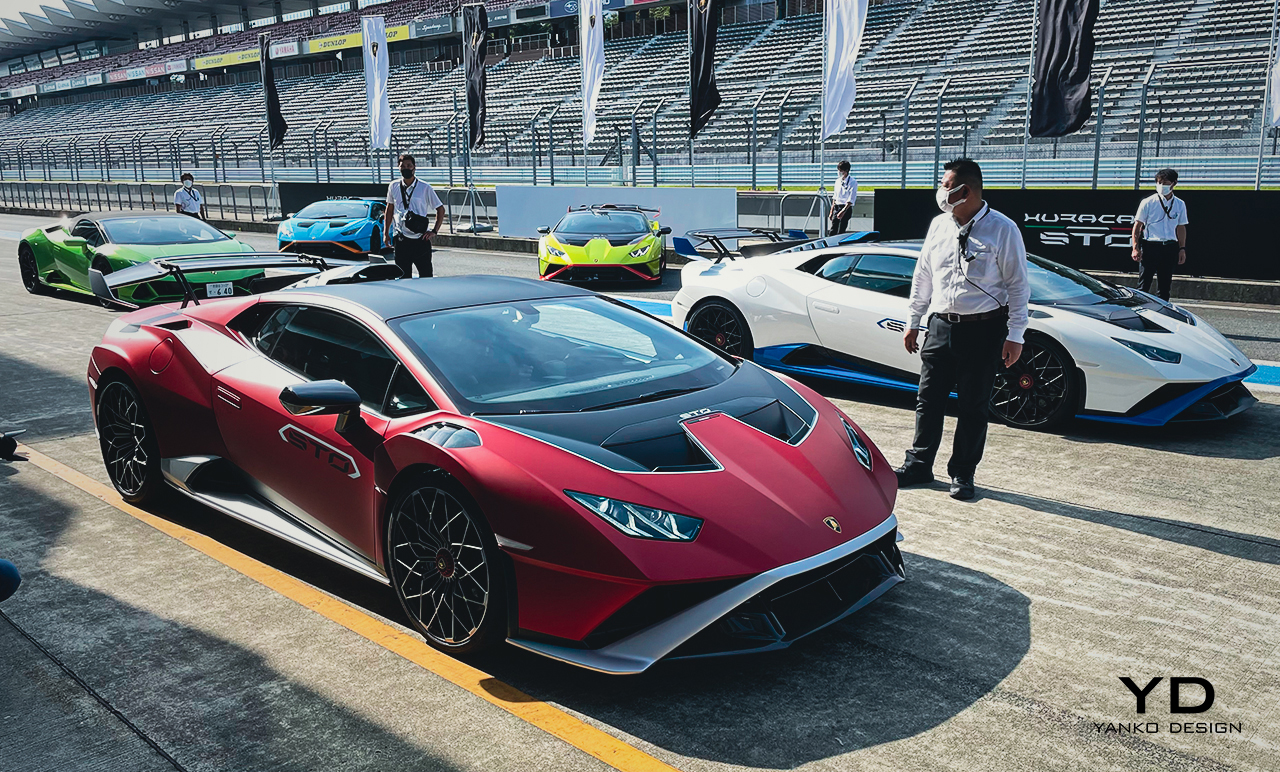
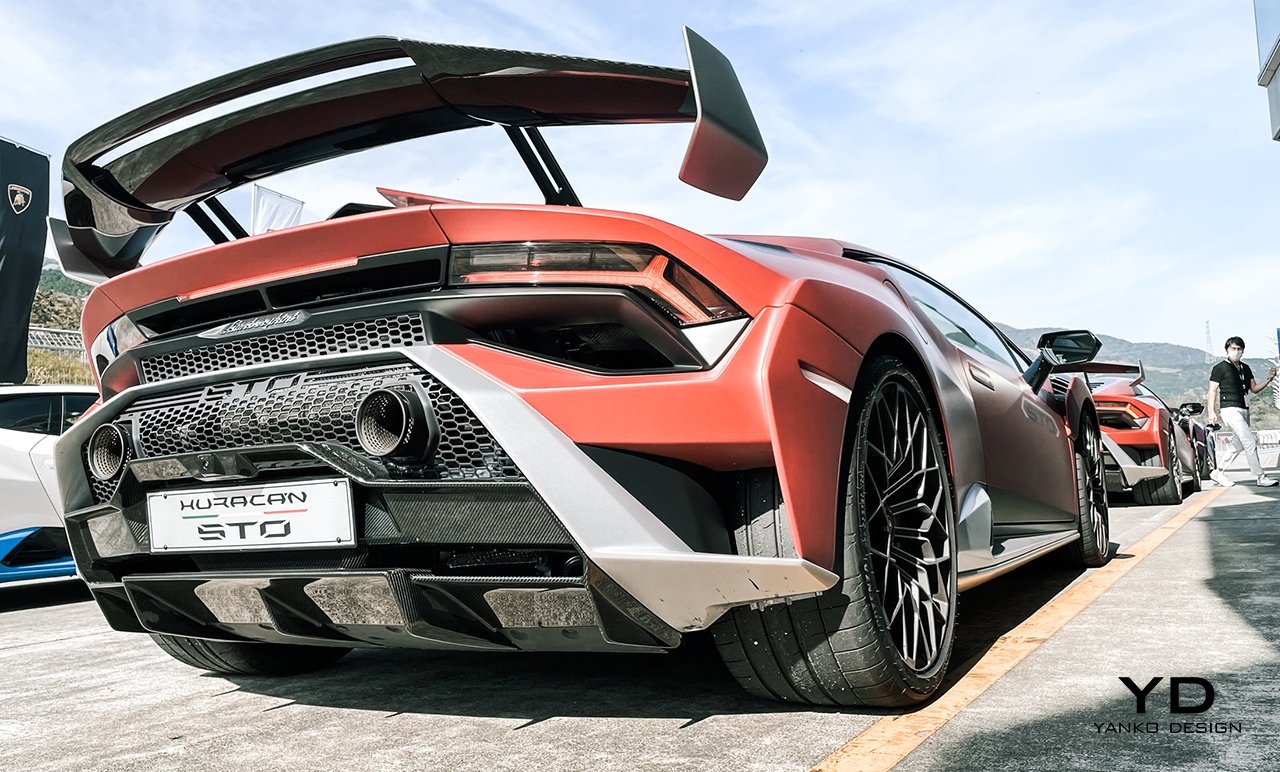
The Driving Experience
The STO also had to be as slippery through the air as it could be while maximizing downforce, and in turn, rear wheel grip. That’s where the front splitter, race-spec rear wing, flat underbody, and diffuser combine to deliver unprecedented front and rear-end downforce, up 53% over the Performante. That translates to around 950 lbs of downforce at 175 mph which is like having three sumo wrestlers sitting on your rear wing as you reach maximum velocity. For the record, the STO has a reported top speed of 200-mph.
Meanwhile, to generate the best possible cooling efficiency for its mid-engined V10 powerplant and brakes, the STO is graced with sizable air ducts, snorkels, and vents. The side air scoops and roof vent helps to force air into the rear engine bay to cool the naturally aspirated engine while the front air ducts pump air to the wheel arches to cool the huge Brembo CCM-R brake calipers and rotors which is short for ‘carbon-ceramic material for the racing market.’
The beauty of these brakes is that they are lightweight yet work brilliantly to dissipate heat and stop the car on a dime. For a driver, it’s so reassuring and confidence-building to know that when you stomp on the brake pedal at 180-mph, the car will pull up quickly and efficiently with no drama and no brake fade. And when combined with the specially made Bridgestone Potenza tires, this Huracán pulls up effortlessly.
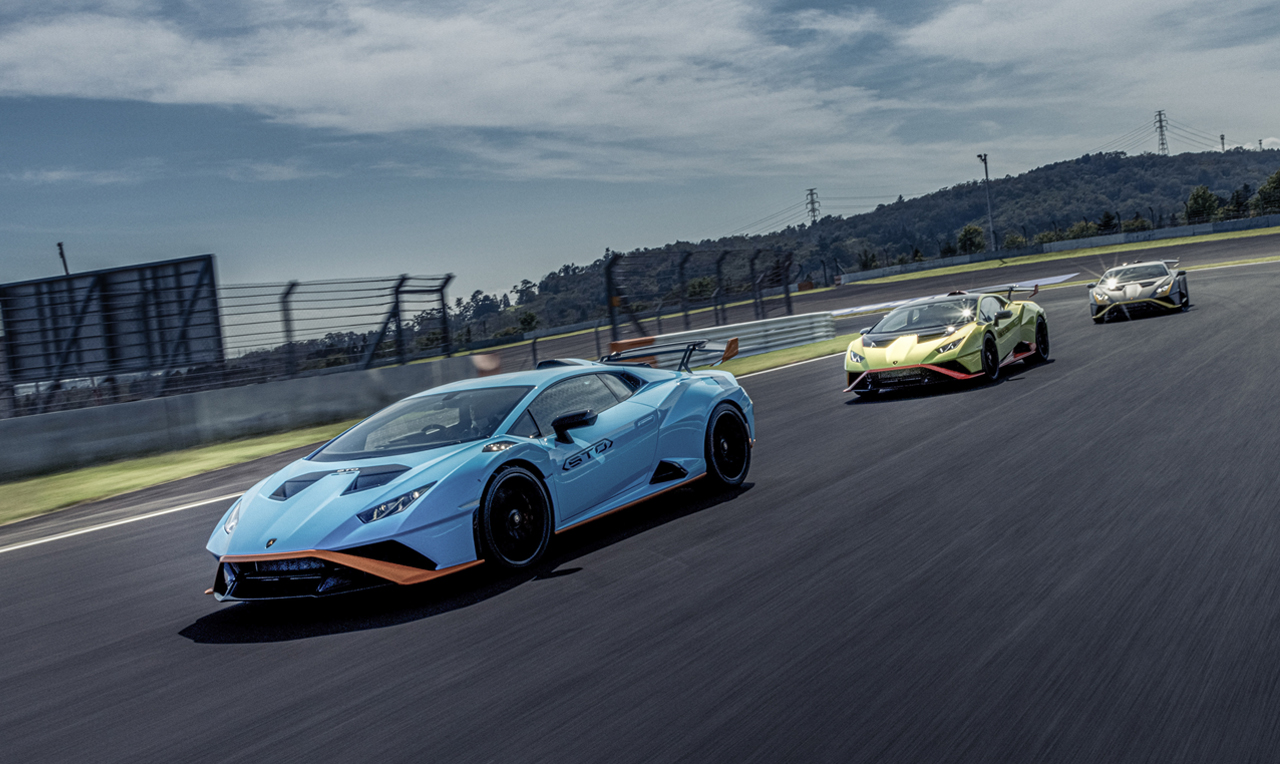
But it’s in the corners where those supremely grippy tires come into their own. As the steering turns in with pinpoint sharpness and excellent feel thanks to the active rear steer feature, the Bridgestones masterfully relay the car’s massive downforce to the tarmac to deliver cornering speeds almost on a par with Super Trofeo race cars. The G-forces you feel in the corners are about as much as most untrained drivers could bear for prolonged periods behind the wheel. That’s how brutal and talented this car is.
You can’t speak about the visceral nature of the STO without focusing on its heart—that luscious V10 engine. It completely dominates the driving experience, as it should. The STO’s 5.2-liter V10 motor doles out power like Jeff Bezos doles out millions to fund his Blue Origin space tourism company—seemingly without limits and in a very flamboyant manner. Bury your right boot and the rear tires chirp and squeal as they fight for grip. In around 3 seconds you’re already doing 60-mph and within 9 seconds you’ve cleared 124-mph. Power delivery is instant, immense, silky smooth, linear, and loud. Very loud.
With 417 pound-feet of torque, the V10 roar from 4000 rpms to the 8500 redline is truly addictive. How often in life do you have an expectation of something prodigious and magical and have that expectation answered every 3-5 seconds, for as long as you’re in the car. Flatten the throttle for 3 seconds, change into 2nd, accelerate for 3 seconds more, change into 3rd, and with every shift, you’re being literally swallowed by a beefy, bassy, operatic Lamborghini soundtrack turned up to 11. It’s sublime and habit forming.
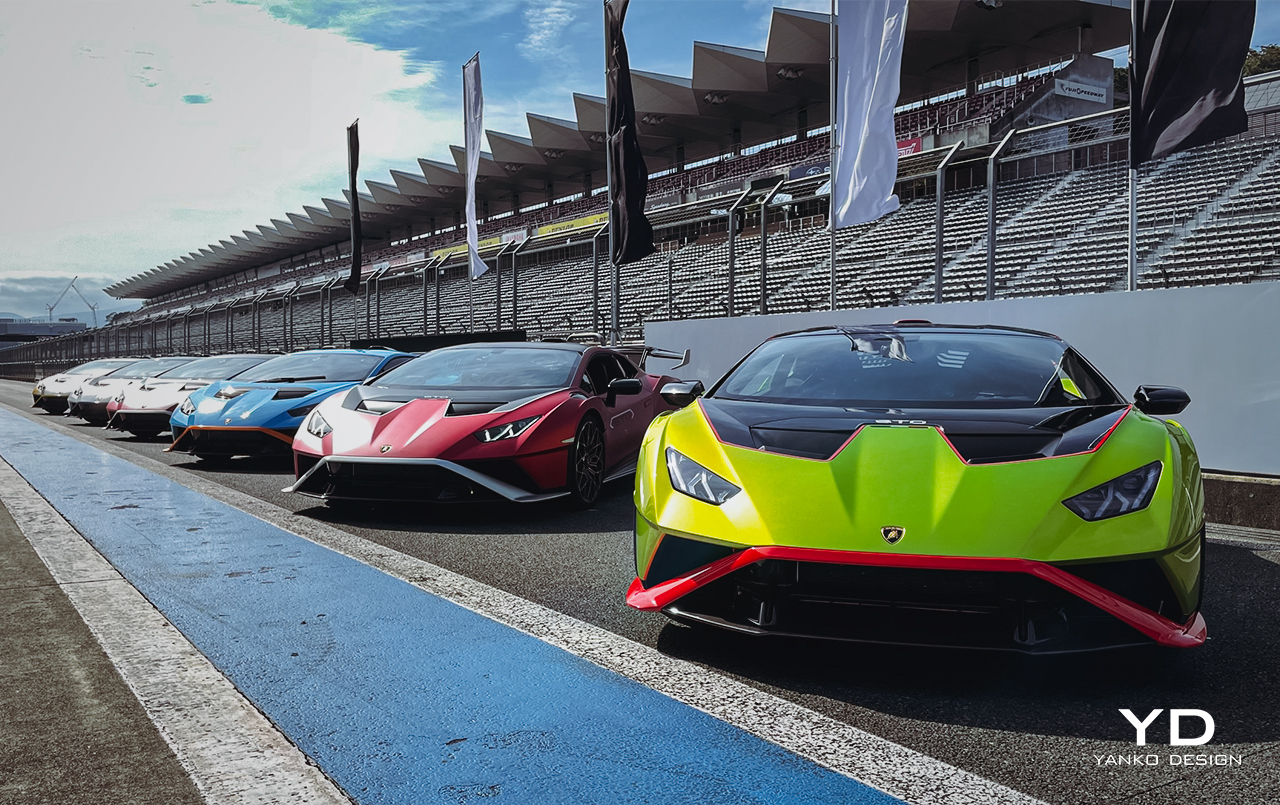
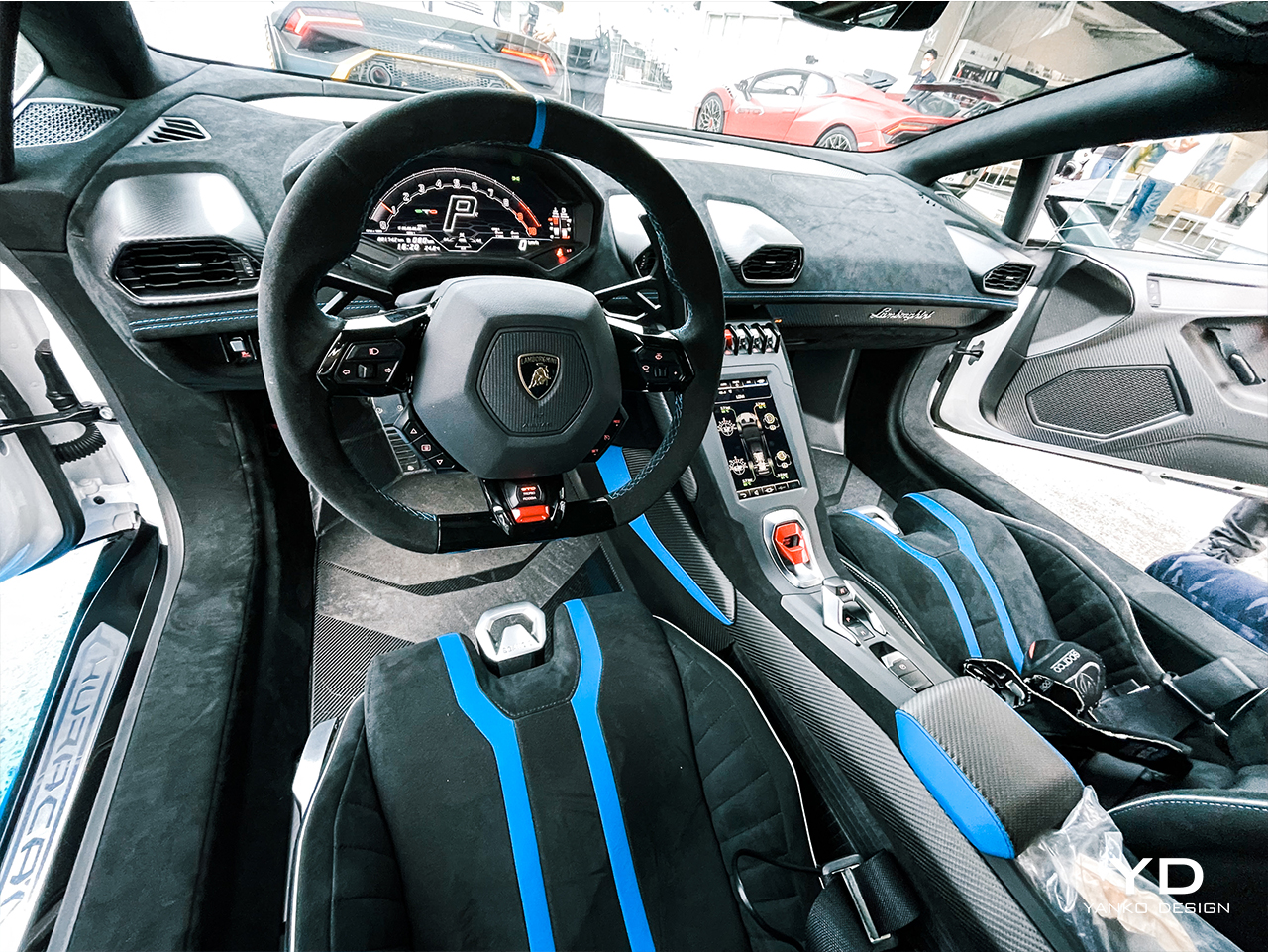
And thank God for those paddle shifters. Unashamedly I found myself reaching for the paddles more than I should just to indulge myself by changing down and then changing up, just so I could change down again. I couldn’t decide if I liked the sound of that ferocious engine more accelerating or decelerating through the gears. It’s like would I rather listen to AC/DC’s Highway To Hell or Deep Purple’s Highway Star? A difficult choice.
But ah, those flappy paddle shifters. Works of art. Their size, shape, and touch make them some of the best positioned, most responsive paddles I’ve ever experienced on any supercar. And the 7-speed dual-clutch automatic gearbox is not only lightning quick in its shift schedule but it’s perfectly matched to the powerband of the V10.
To further enhance the driving experience, the STO comes with three drive modes, STO (normal), Trofeo (track), and Pioggia (Wet). Starting in STO mode, I pushed the car hard and came out of my first two laps very happy with the result. Then I switched it to Trofeo for an instant and was surprised to see the character of the car change considerably and become even more laser-focused and extreme. If you are brave enough to flick the switch to ‘Trofeo,’ you’d better be ready for some tail-happy shenanigans exiting the corners. The suspension will stiffen up, the throttle will become more responsive and the steering gets sharper while dialing down traction control. This will allow for some oversteer tendencies that require lightning-fast correction. That’s why our Lamborghini hosts suggested that we leave the car in STO. After three corners, I switched it back to STO.
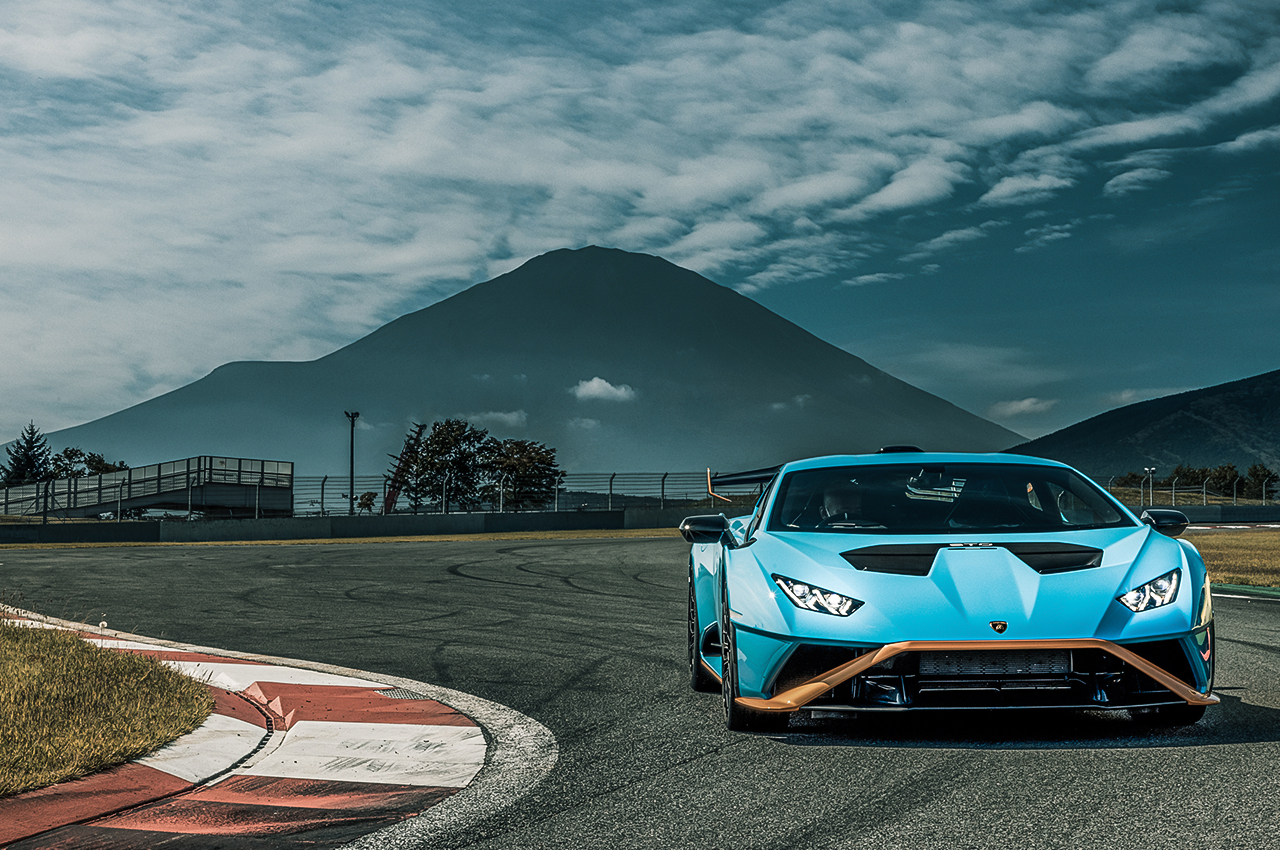
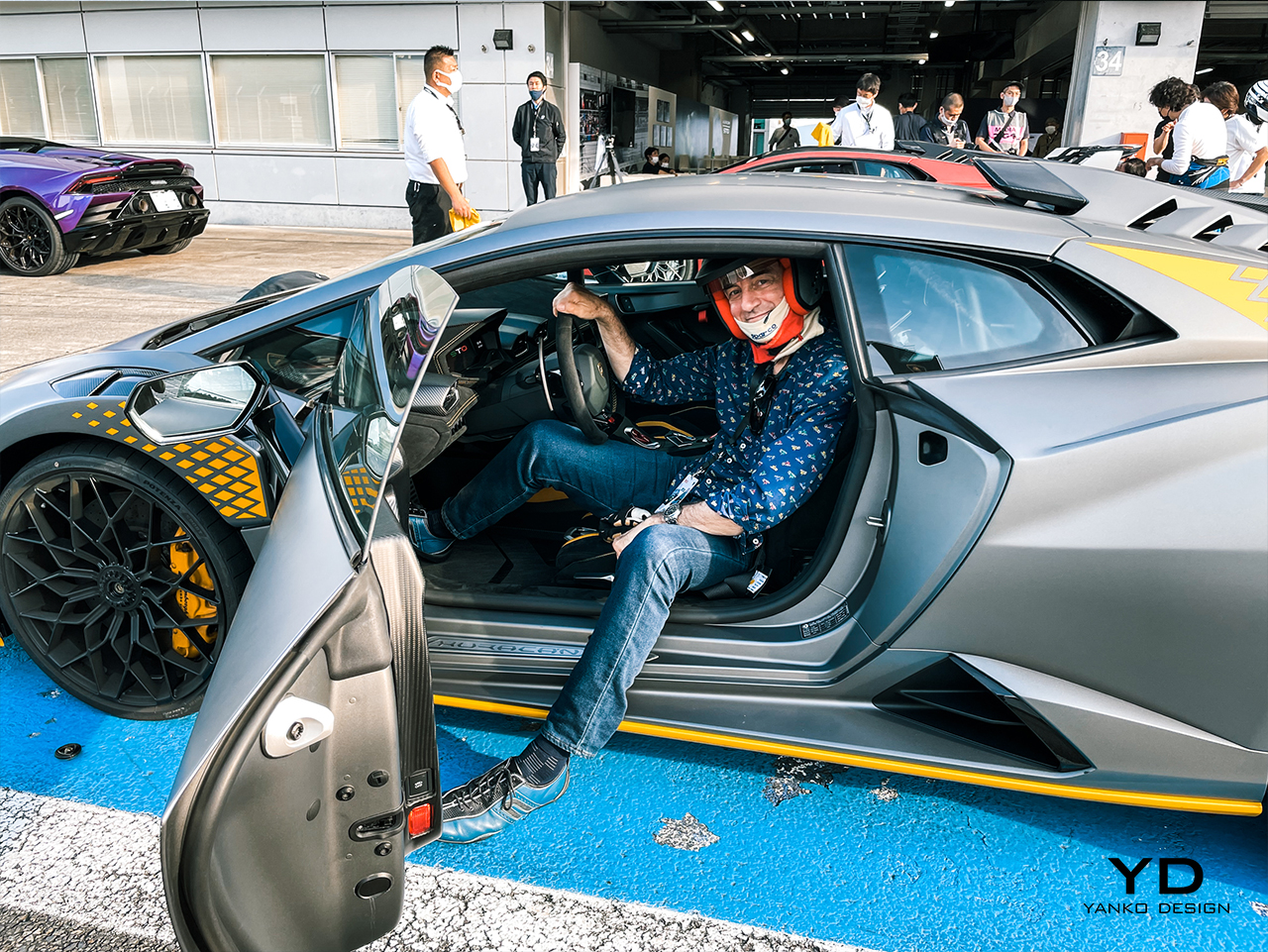
So yes, the STO is quick, corners like a race car, and sounds ballistic. But it only has 631-hp. Only, you say? When compared to its rivals, the Huracán’s V10 has been pretty much squeezed to the upper limit of its power potential, making it play second fiddle to the likes of Porsche and McLaren whose turbocharged engines generate significantly more power. What the STO may lack in power when compared to say the 700-hp Porsche GT2 RS or the 754-hp McLaren 675LT, it certainly makes up for in on-track performance. This Huracán is able to go into and out of a corner faster than any supercar I’ve ever driven.
I’ve piloted Lamborghini Huracáns and Aventadors, and McLarens and Ferraris on tracks at high speed, and I’d have to say that this is the most fun I’ve ever had in a road-going car. It gets the blood pumping with its visual eccentricities ever before you squeeze into its tight cockpit. Once on board, the adrenalin kicks in another notch. As you flick your way through 1st, 2nd, and 3rd gears and approach 110 mph, the melodic resonance of the thumping engine parked just 20 inches behind your right ear is like having legendary tenor Luciano Pavarotti hitting the high note in Nessun Dorma in the seat next to you. Repeatedly.
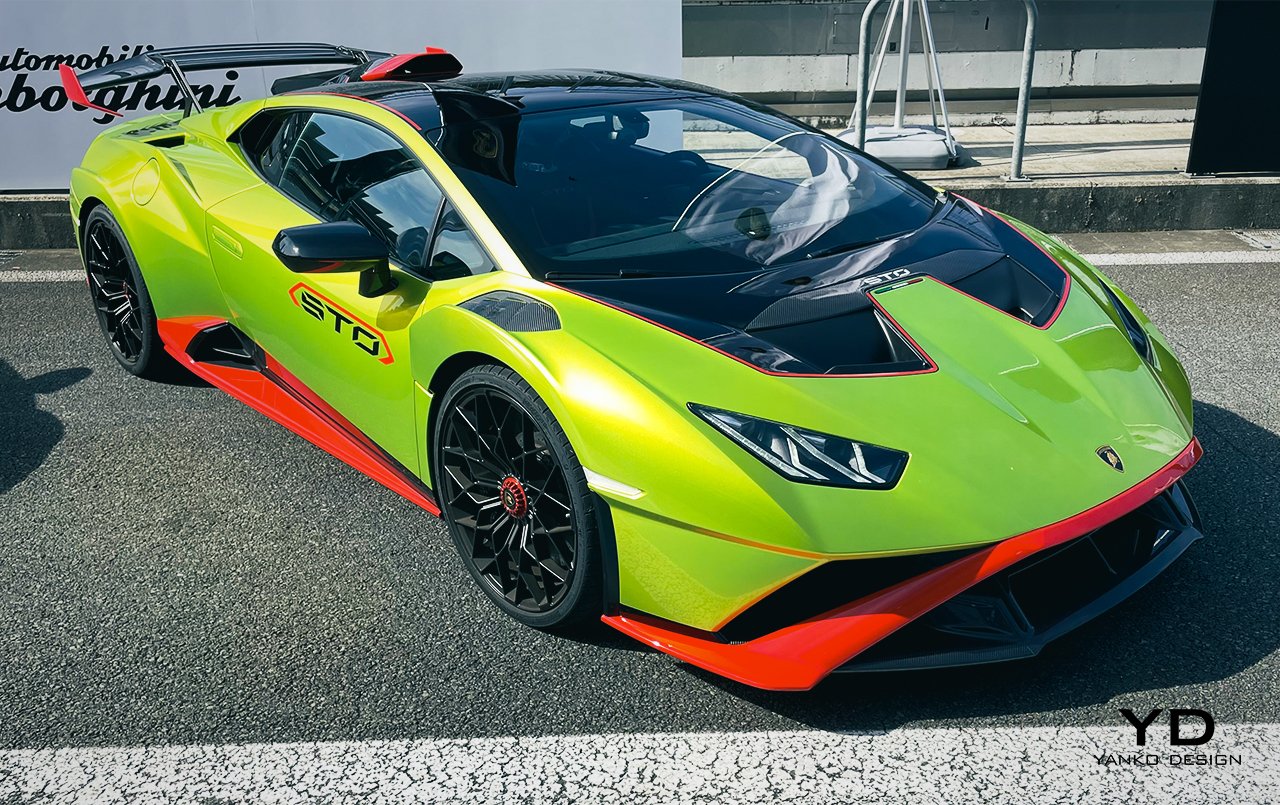
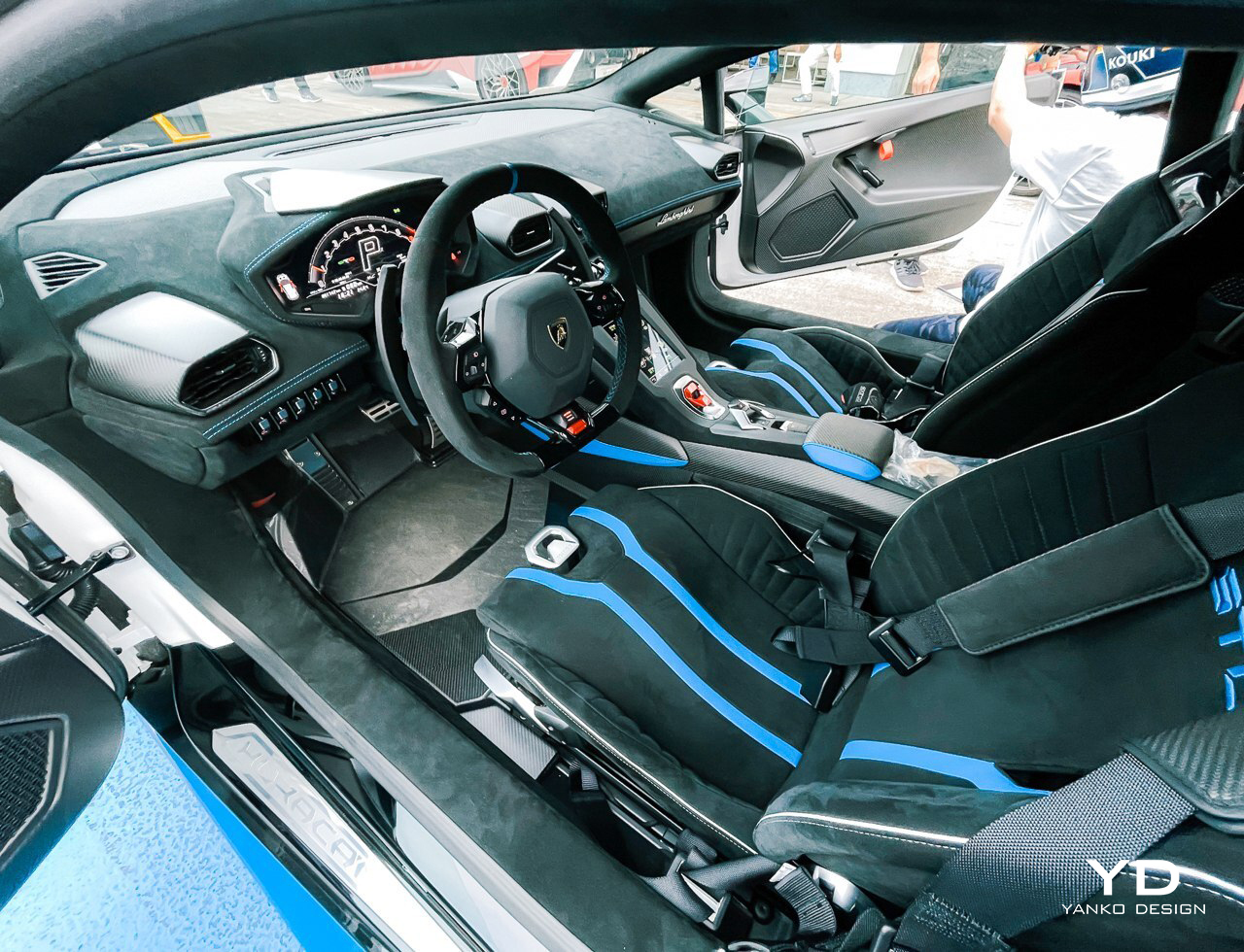
The cabin is spartan but luxurious by comparison to the Performante, with acres of exposed carbon-fiber surfaces, an Alcantara-wrapped dashboard and to save even more weight, bright red pull straps in place of standard door handles. The race-style bucket seats can be adjusted manually for height and angle, and the full digital display is clear and easy to read. To be honest, it was a little tight in the driver’s seat with a helmet on, but without that brain bucket, even a 6-foot 2-inch tall driver like me has enough headroom to manage those G-forces.
A central touchscreen interface remains and has been reconfigured to provide a wealth of data options, including things like individual tire pressures and braking temperatures. It also has one that will automatically prompt gear selections when approaching corners on circuits catalogued in its memory. Unlike most hardcore track-focused cars, the STO retains its climate control system but does away with carpet, replacing that with lightweight rubber mats.
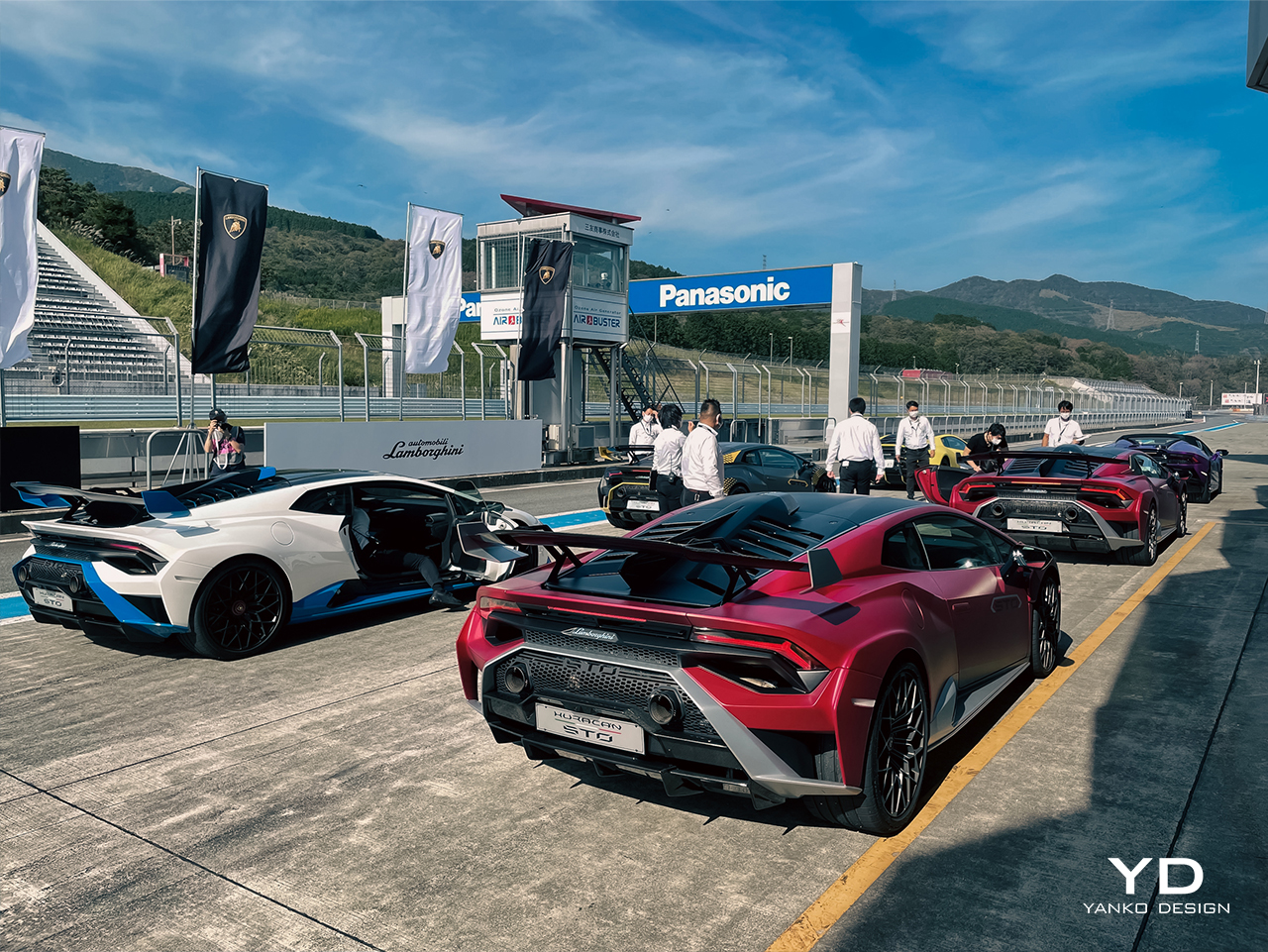
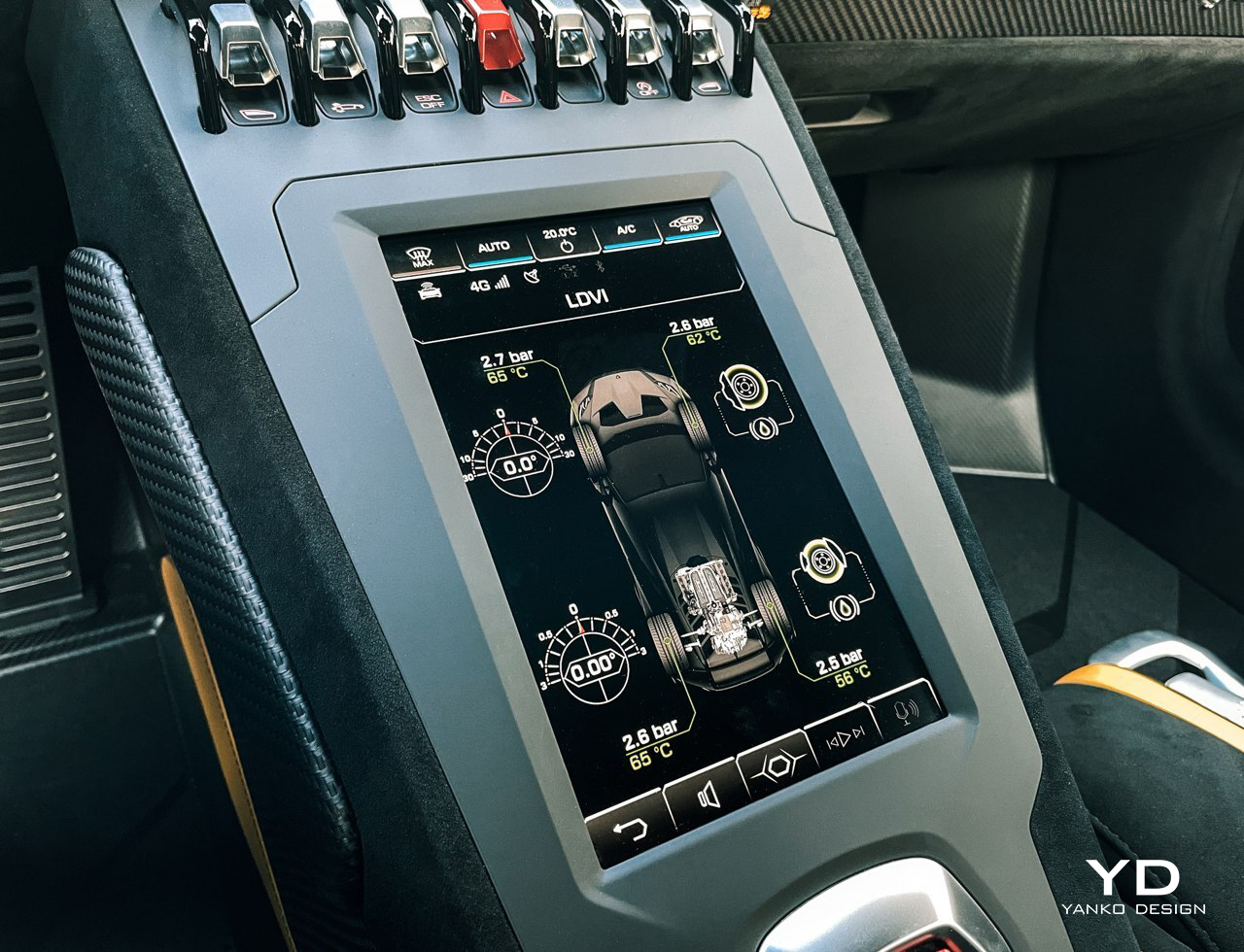
The STO also boasts a comprehensive race-inspired, on-board telemetry system, able to log data and record videos that can be uploaded to an app. According to Lamborghini, the official line for this telemetry is to help owners polish up their driving skills, but the ability to share your track day results with fellow racers is likely to generate greater interest.
Pricing and Options
Boasting a base price of $327,838, the STO’s substantial and expensive options list can quickly have your wallet pushing $400,000. For the full carbon fiber pack, just add on $26,000, or $4,000 for the front lift system or an extra $14,000 for a pearl-effect white paint job. Even those image-enhancing STO stickers on the side of the car will knock you back over $4,000. And that’s less than one-third of the options list.
This STO is by no means a gimmick. It’s the real deal. It’s a road car with the pedigree and capability of a race car. What it may lack in power compared to its rivals, it more than makes up for in the on-track handling and fun factor department. Whether it’s the extreme exterior, the prodigious acceleration, on-the-rails cornering or that operatic V10 soundtrack, the STO is a must-have for anyone who wants a top track-focused racer and has a spare $400,000 stashed down the back of the sofa.
